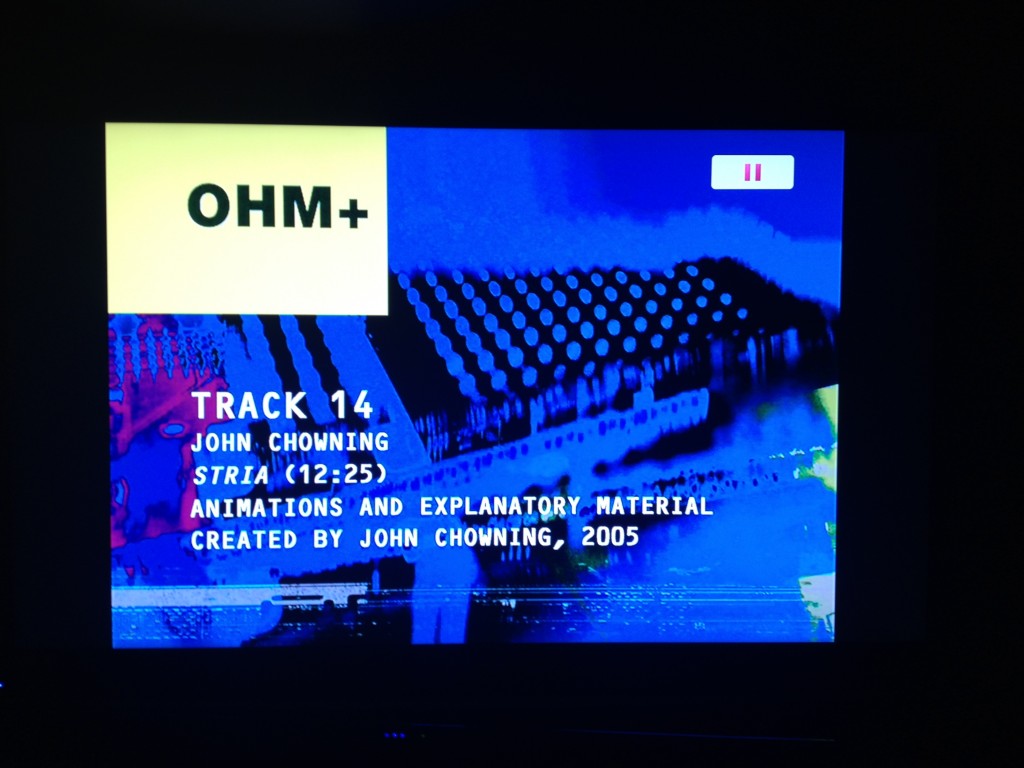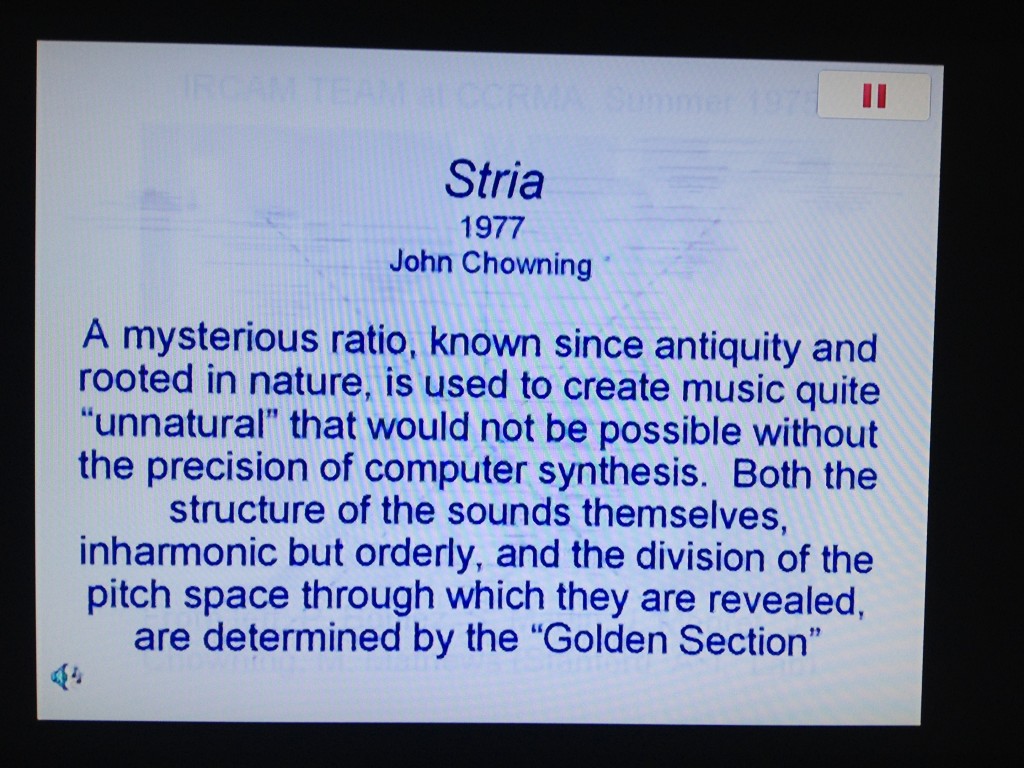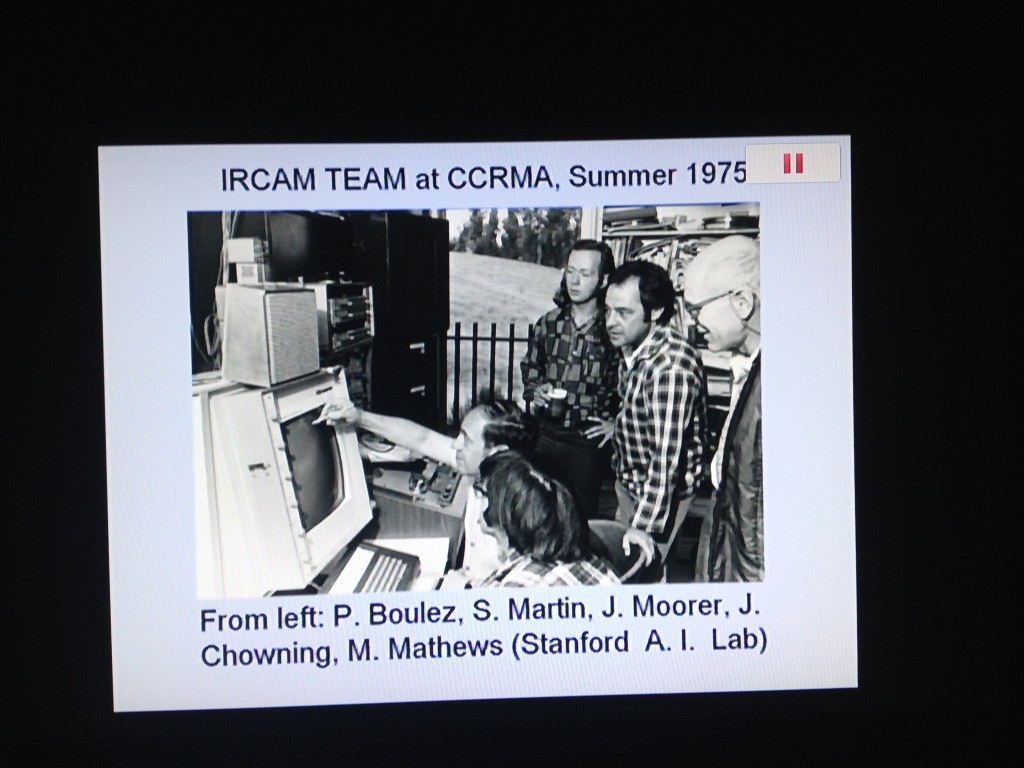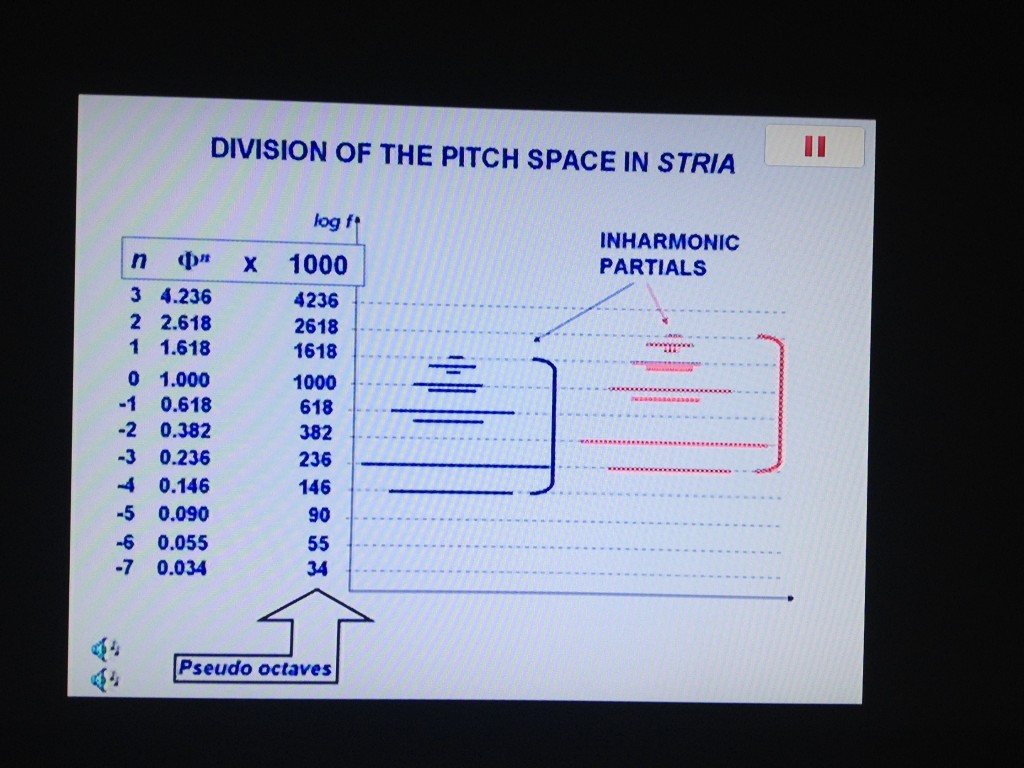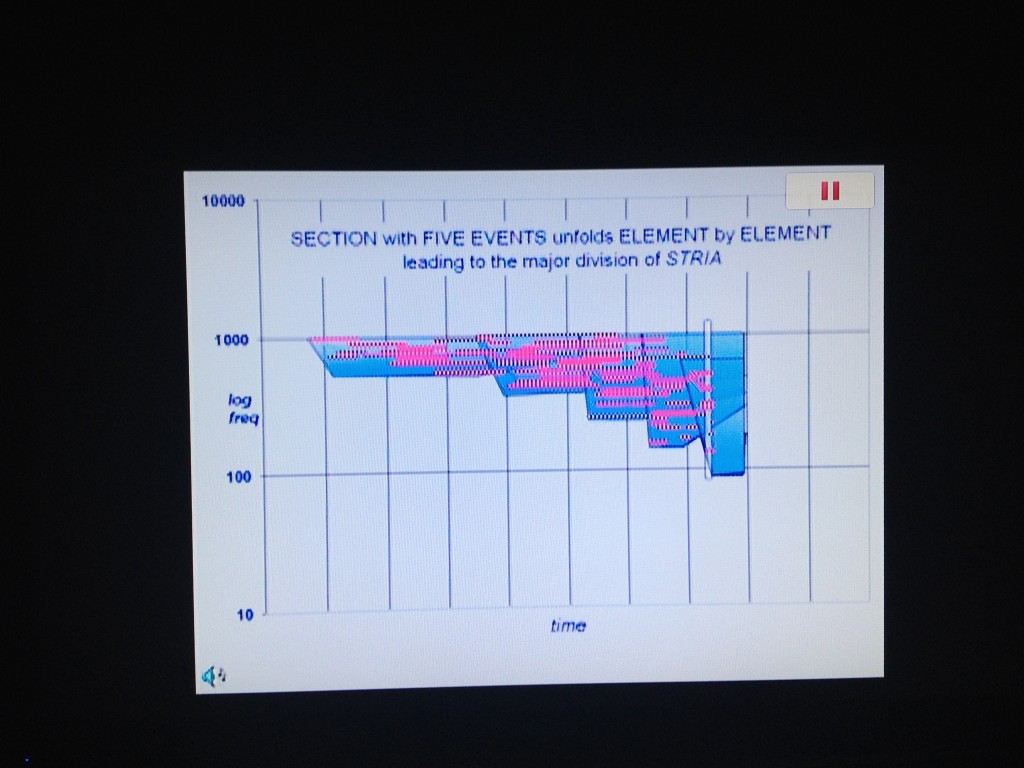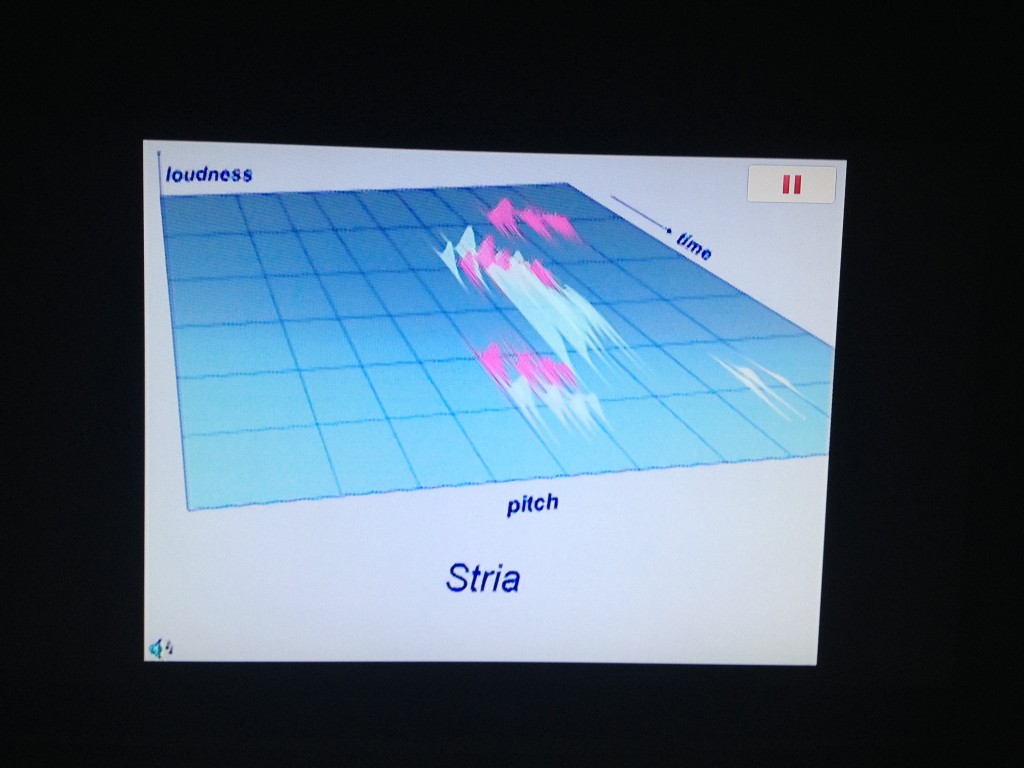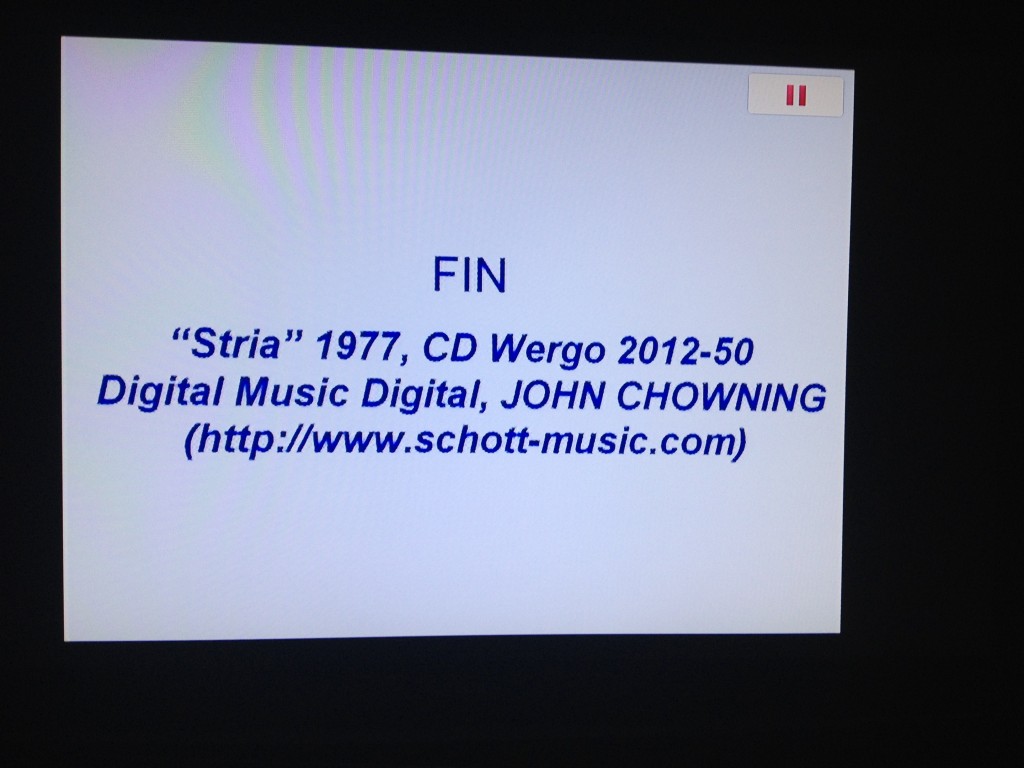Being a fan of early electronic music, I recently watched a DVD documentary entitled “Ohm+: The Early Gurus of Electronic Music“, featuring pioneers like Robert Moog and others in that genre of musical experimenters. I was happy to discover that track 14 featured a synthesized composition (computer generated) with both partials (harmonics) and relative timing of notes based on the golden ratio by FM synthesis pioneer John Chowning of the Center for Computer Research in Music and Acoustics (CCRMA) at Stanford University in Palo Alto, California. Here is an audio clip and some screen shots (both taken with my iPhone so the quality isn’t quite as nice as it could be, but I was a bit lazy), but you’ll get the idea and can rent this on Netflix (or elsewhere) if you’re interested. Ignore the cat meows, which aren’t on the original. :-)
Years ago, when I was studying electronic music at University of California Davis with Tony Gnazzo and Jan Pusina (the instructors there at the time), I recall learning of Chowning’s work during that era, and in particular of his using a tetrahedral arrangement of speakers (1 directly overhead, the other 3 equally spaced at 120 degree angles from the listener) to do acoustically realistic 4-channel audio spatial modulation. I remember that one of his experiments was taking a recording (using 4 microphones with the same 3-D spacing) to simulate a fly buzzing around someone’s head, and being able to simulate this using computer-generated 3-D spatial modulation.)
Enjoy!
